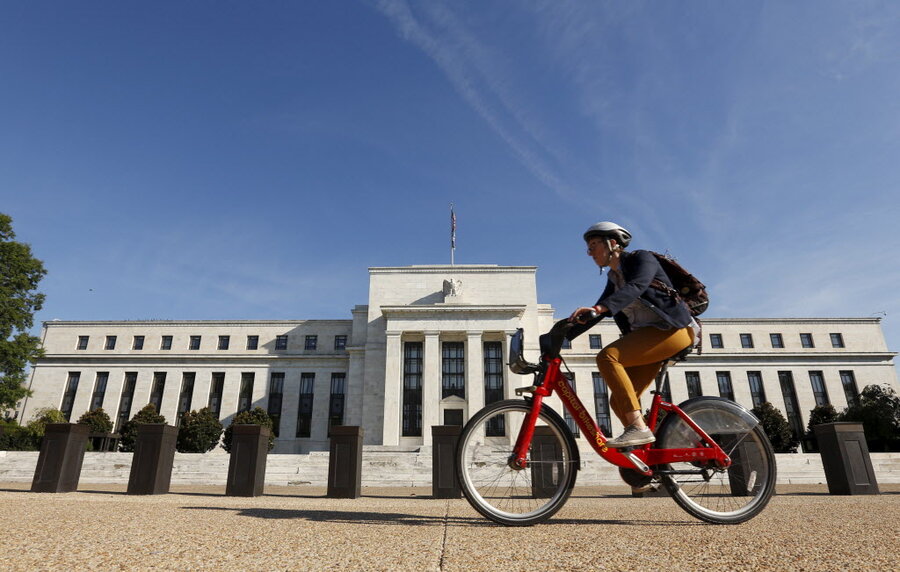Will Fed raise interest rates? Oil industry anxiously awaits decision.
Loading...
The Federal Reserve could raise interest rates as soon as this week, as its governors meet to discuss monetary conditions. The decision could have an enormous impact on the oil markets.
The Fed has not raised interest rates in almost a decade, and although nobody is expecting the central bank to hike rates by anything more than a quarter of a percentage point, if it does so, it will mark the end (or the beginning of the end) of an unprecedented era of loose monetary policy.
The period of extraordinarily low interest rates helped fuel a housing boom and bust, but also a boom and bust in oil production. So many exploration and production companies were able to obtain credit to drill as many wells as possible over the past decade, with generous financing made possible by an accommodating Fed. That contributed to the massive increase in oil production, from 5.6 million barrels per day (mb/d) in 2011 to a peak of 9.6 mb/d in April of this year.
Without low interest rates, the U.S. oil boom may not have been as huge as it has been, meaning that the bust from too much supply may not have happened either.
ExxonMobil’s CEO Rex Tillerson, in a recent interview with Petroleum Intelligence Weekly, talked about how this bust is much different from previous ones, largely due to cheap finance:
“The low cost of money, large amounts of private equity money is easily raised because it doesn't cost anything at these low interest rates. And that is what you saw in the first pop-up earlier this year, a lot of the conventional players that were in pretty bad shape suddenly got an infusion,” Tillerson explains. “They were either able to raise some money from banks, or they were able to raise it through private equity markets, or they were able to issue shares. It stunned me. I think it's because we are part of this general environment in the global equity markets and investment climate of very low cost financing, so you can take a lot of risk, and that is what people are doing.”
Nevertheless, everyone is waiting to see if the Fed will now take away the punch bowl. Any rate increase will make junk bonds relatively less attractive, which could raise the cost of borrowing for indebted oil companies, perhaps to prohibitive levels for those struggling the most.
Banks, and debt and equity markets are already starting to sour on weaker shale companies. Many exploration companies weren’t even cash flow positive before the bust, so emerging from the wreckage seems unlikely for them, especially if the Fed raises interest rates. Time could run out for some, as next month another round of credit redeterminations will take place. Some lenders could cut access to credit for drilling companies that have seen the value of their assets deteriorate. No longer sure that they will ever be paid back, lenders could pull the plug.
For oil prices, a rate increase would also be negative. Higher interest rates would strengthen the U.S. dollar, making oil more expensive, as it is priced in dollars. That could push down oil prices as the markets would factor in lower demand for crude.
However, the Fed could put off the decision for another meeting. After global panic over the Chinese stock market, a brewing currency crisis in emerging markets, and a global downturn in commodity prices, the Fed may decide that now is not the time. It has proven difficult for the central bank to extract itself from its policies of extraordinary intervention. But at a time when inflation is so low, there is little urgency for a rate increase.
Still, there are some risks to delay. The markets could continue to experience gyrations and fluctuations caused by uncertainty surrounding the Fed’s future decisions if there is no increase in the interest rate. Everyone expects the bank to eventually raise interest rates, so if not this week, when? An increase in interest rates, while damaging to companies dependent on access to cheap credit (like so many oil drillers), would at least bring some certainty.
This is all set against a backdrop of the physical market for crude, which is showing signs of adjustment. Weekly production figures from the EIA have U.S. oil production down to just 9.11 mb/d for the week ending on September 11, a sharp contraction from April’s 9.6 mb/d. The decline is expected to continue in the months ahead. For the major shale regions in the U.S., the EIA expects output to fall by another 80,000 barrels per day in October, led by a 62,000 barrel-per-day loss from the Eagle Ford.
So while an increase in the interest rate would be negative for oil prices, the ongoing declines in production could start to push oil prices up. But in the short-term, at least, the Fed’s move will carry more weight.







